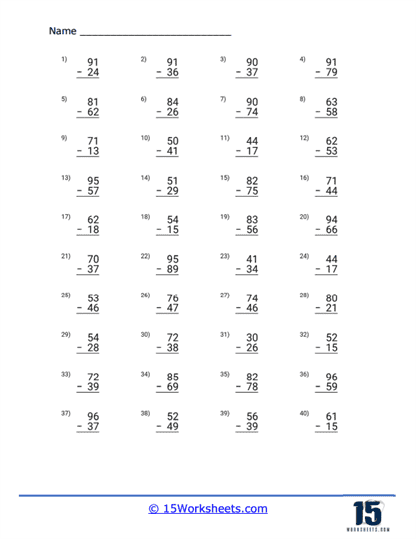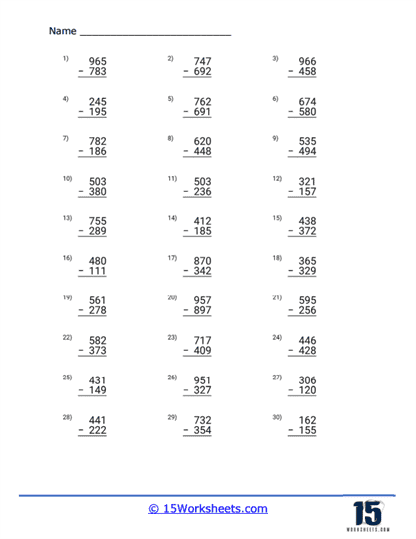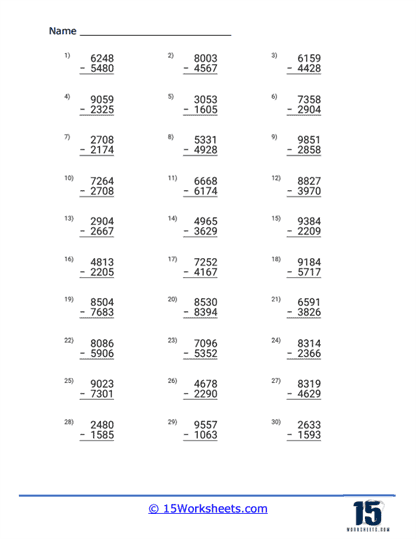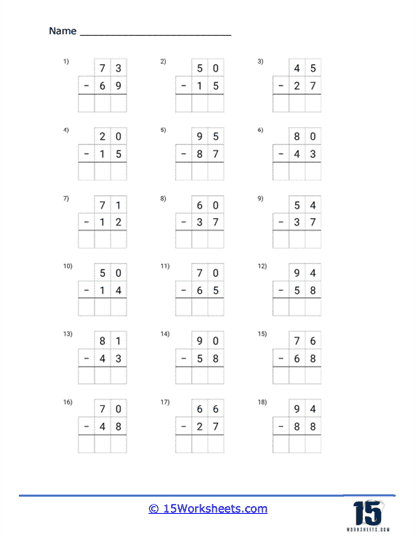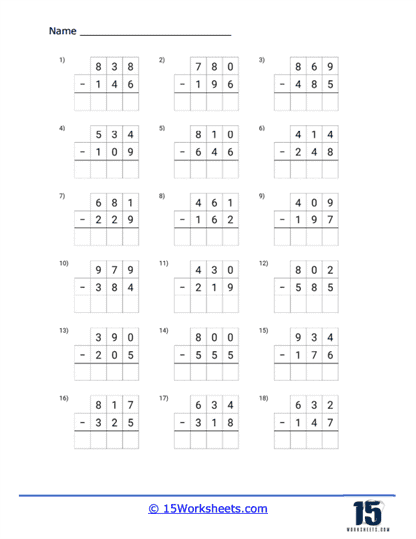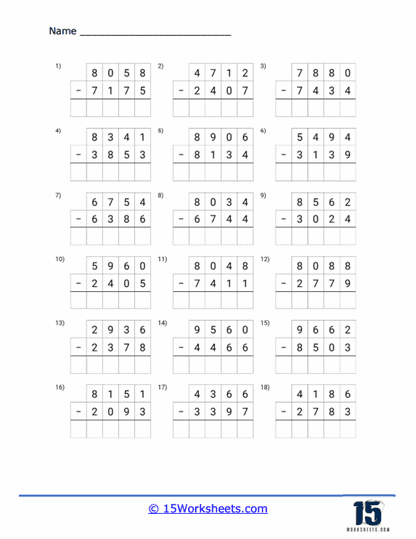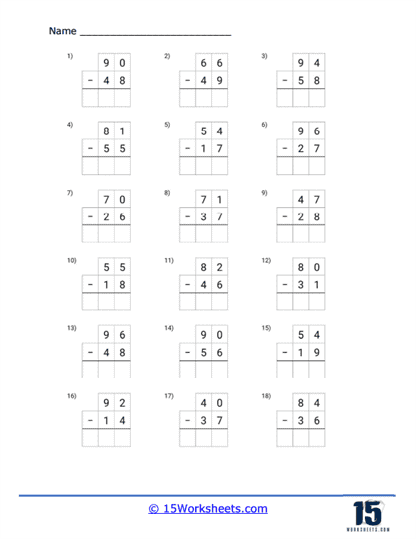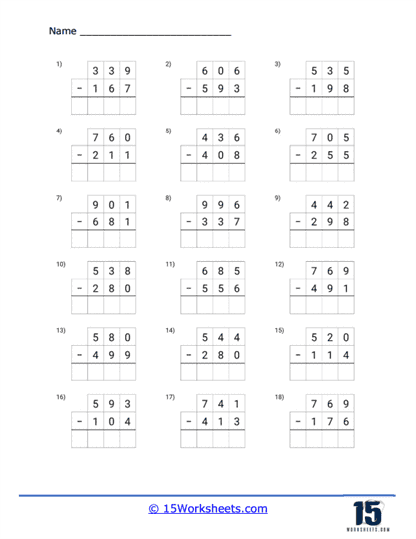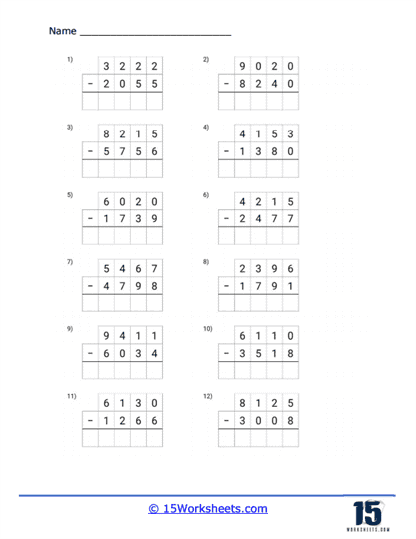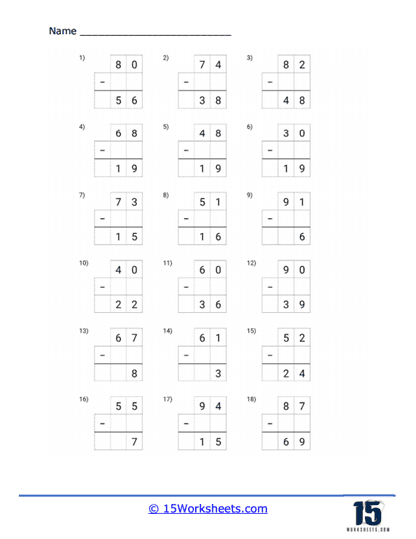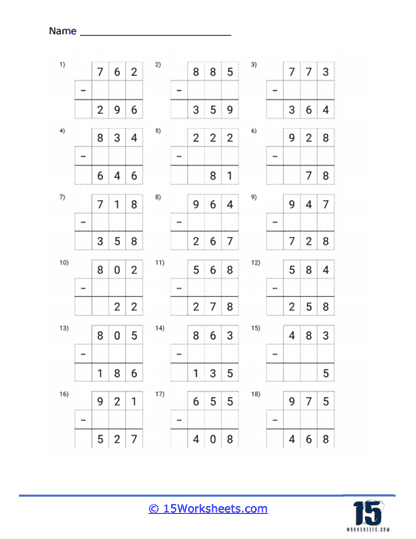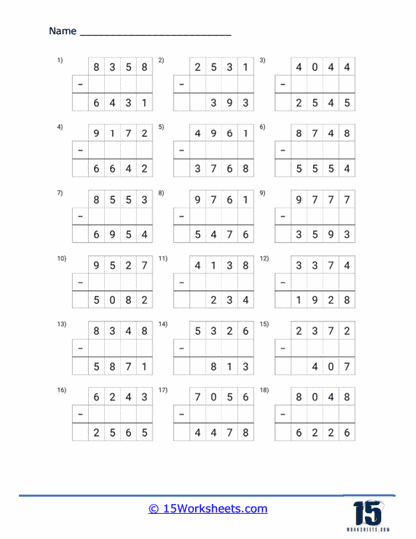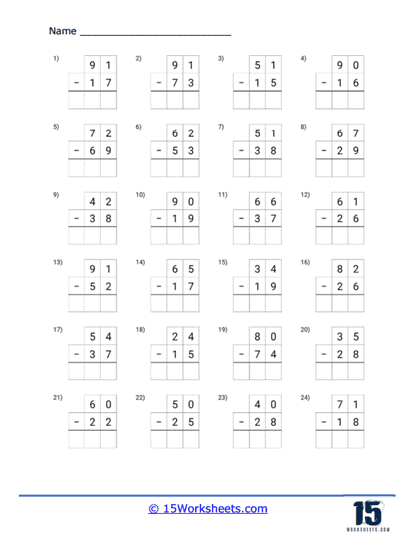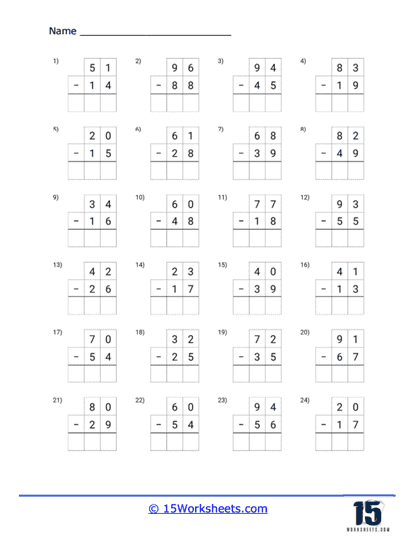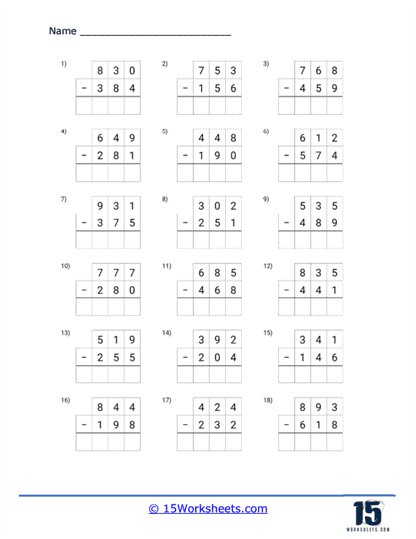Regrouping Subtraction Worksheets
About These 15 Worksheets
Regrouping Subtraction Worksheets were created to help students understand and practice subtraction with regrouping. These worksheets consist of various exercises and activities that engage students in different ways to reinforce their understanding of regrouping, also known as borrowing or carrying, when subtracting larger numbers. They should be able to subtract single-digit numbers without regrouping. They build upon this knowledge and introduce the concept of regrouping to perform subtraction with larger numbers.
Regrouping, in subtraction, is the process of borrowing or carrying numbers from one place value to another. It allows us to subtract numbers when the digit being subtracted is larger than the digit it is being subtracted from. Regrouping is necessary to perform accurate calculations.
This series of worksheets consist of two- or three-digit subtraction problems that require regrouping. These problems are presented in a vertical format, where the larger number is written above the smaller number. Students are guided through step-by-step instructions on how to perform regrouping to obtain the correct answer.
The worksheets start with simple regrouping exercises involving two-digit numbers. For example, if the ones place digit in the top number is smaller than the ones place digit in the bottom number, regrouping is required. The student is then instructed to borrow from the tens place, adjusting the top number and continuing the subtraction process.
As the worksheets progress, more complex regrouping scenarios are introduced. This includes regrouping from the tens place to the ones place, or regrouping across multiple place values. These exercises challenge students to think critically and apply the regrouping concept accurately.
It is important to note that regrouping subtraction can be challenging for some students initially. However, with practice and repetition using these types of resources will help students gradually develop proficiency and gain confidence in performing regrouping accurately.
How Do You Explain Regrouping in Subtraction?
Regrouping in subtraction, also known as borrowing or carrying, is a process used when subtracting numbers where the digit being subtracted is larger than the digit it is being subtracted from. It allows us to accurately perform calculations when the top digit in a column is smaller than the bottom digit.
To explain regrouping in subtraction to a 12-year-old, you can use the following step-by-step approach:
Step 1) Start with a simple example:
Begin by using a simple two-digit subtraction problem that requires regrouping. For example, consider the problem 42 – 19. Explain that when subtracting the digit 9 from 2, we encounter a situation where regrouping is necessary.
Step 2) Identify the need for regrouping:
Draw two columns to represent the tens and ones places. Write the numbers being subtracted vertically. In our example, write 42 at the top and 19 below it. Explain that when we subtract 9 from 2, we cannot directly do that because 9 is larger than 2. This is where regrouping comes in.
Step 3) Borrow from the tens place:
Explain that in regrouping, we “borrow” or “carry” from the tens place. In our example, we need to borrow from the tens place (4) and add it to the ones place (2) to make it 12. Emphasize that when we borrow, we subtract 1 from the tens place and increase the ones place by 10.
Step 4) Perform the subtraction:
With the borrowed value, rewrite the subtraction problem as 12 – 9. Now, explain that we can subtract directly because the top digit is larger than the bottom digit. In this case, 12 – 9 equals 3.
Step 5) Complete the subtraction:
Write the result (3) in the ones place below the line. Leave the borrowed value of 1 in the tens place. The final result of the subtraction problem 42 – 19 is 23.
Step 6) Reinforce with additional examples:
Provide more examples of two-digit subtraction problems that require regrouping. Guide the child through each step, gradually increasing the complexity of the problems. Repeat the process until the child becomes comfortable with regrouping and can perform the calculations independently.
Throughout the explanation, use visual aids such as base-ten blocks or place value charts to help the child understand the concept visually. Emphasize the importance of borrowing from the appropriate place value and show that regrouping ensures accurate subtraction when dealing with larger numbers.

